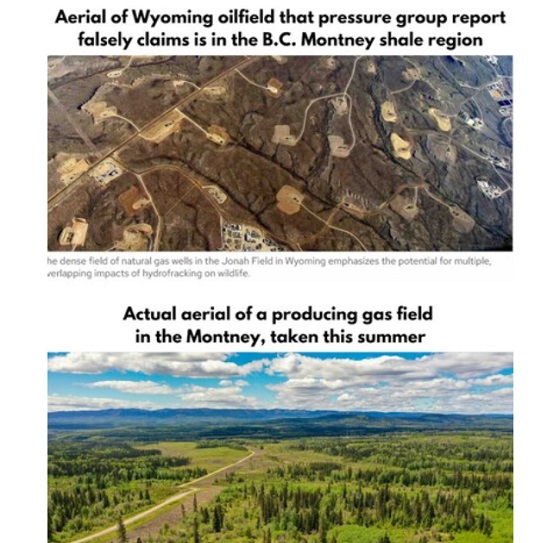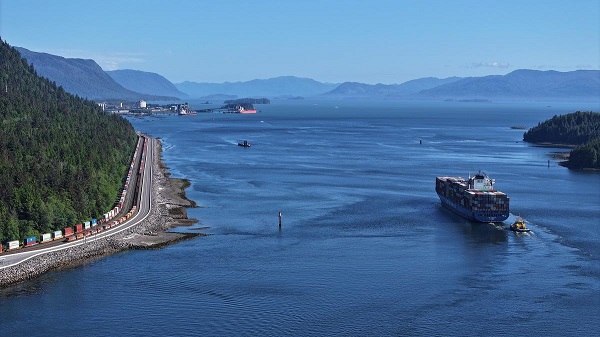Business
The big quiet bail out – Euro/Japan central banks propping up stock markets, is the US next?

You’d think that the golden age of markets, if there was one, would be something like the post WWII economic expansion era. That was pretty impressive, driven by baby boomers and the gigantic wave of consumption that enveloped them. Never before in history had parents worried so much about the outfits that New Baby would wear, and it only got crazier from there.
Fundamentally though, the late 1700s were far more earth-shaking. Not in the consumerist sense; those austere horse-travelers managed to survive somehow without the likes of either Apple or Lululemon, for example, but consider the free-market achievements of that period. The United States came into existence, a profound new experiment in governance and free(ish) markets. In academic circles, famed economist/philosopher Adam Smith coined the term “the invisible hand of the market” in his book The Wealth of Nations. It was a reference to the ability of a market economy to provide benefits far beyond those that accrue to the creator. That is, an inventor of something that becomes wildly successful enriches not only the inventor, but society as a whole. Plus, it is an indirect reference to the ability of markets to efficiently allocate capital.
We tend to forget that wonder of capital markets, particularly as the world drifts into one defined more and more by government intervention. Since the 2008 financial meltdown, governments have gone kind of berserk in attempting to keep the financial world afloat, causing markets to gyrate in increasing spirals through wild-eyed policy guidance as the dollars at stake become stupefyingly large. We no longer have economist/philosophers at the helm; we have economist/desperados who have convinced the world their alchemic ways will work, and they don’t know that it will, but they’re really really hoping.
The new breed of economist has introduced an all new Invisible Market Hand – not one that provides infinite benevolence, but one that is like a forklift driver feeling confident in his/her ability to pilot a fighter jet because the seats are similar.
The strategy of which I speak began in Japan over the past decade. After years of trying to kick start the Japanese economy in various ways, including dropping interest rates to zero, the central bank began buying up treasuries as a means of supporting debt markets. When that didn’t get things going, they took the next step and actually began buying up equities to prop up stock markets. Since then, Europe has started a similar program. And yes, you heard that right – in those jurisdictions, if stock prices fall too much, the market is prevented from self-correcting, and governments are, in effect, breaking the fingers of the original Invisible Hand.
They appear to be stepping in to keep critical sectors of the economy in good shape, and also to enhance the “wealth effect”. The wealth effect refers to how citizens tend to spend more drunkenly when they feel wealthy, and for many that means a healthy portfolio. If someone sees their retirement nest egg shrink from $100,000 to $50,000 in a severe market downturn, those people tend to lockdown spending – a wise reaction. But as we’re seeing, the world keeps turning because we are consumers, and like it or not, consumption makes our world go round. So by making those portfolios stay healthy one way or another, governments seek to put the population in a semi-drunken spending stupor in order to keep the party going. Anyone who’s witnesses a true boom economy will recognize the phenomenon – at the peak of the oil boom 6 or 8 years ago, there were direct flights from Fort McMurray to Las Vegas, and thousands of twenty-somethings were purchasing vacation properties. Suffice it to say that those days are gone.
Don’t expect the new Invisible Market Hand to bail you out if your brother-in-law convinces you to load up some hot stock tip he got from a friend who got it from a friend who got it from a friend, because the “friend” at the end of that chain will be some dubious stock promoter that may or may not end up in jail, and even panicked governments won’t save those souls.
With the new strategies for propping up markets however, we’re starting to see the lengths governments will go to in order to maintain financial stability. You’d think the mountains of debt will lead to a day of reckoning, but, emboldened by the global government response to the 2008 financial crisis, the high priests of finance are becoming more emboldened. That our fate depends so heavily on a squadron of tweedy economists is truly frightening, but we’re all in the same boat, so enjoy the ride…
For more stories, visit Todayville Calgary.
Business
Dallas mayor invites NYers to first ‘sanctuary city from socialism’

From The Center Square
By
After the self-described socialist Zohran Mamdani won the Democratic primary for mayor in New York, Dallas Mayor Eric Johnson invited New Yorkers and others to move to Dallas.
Mamdani has vowed to implement a wide range of tax increases on corporations and property and to “shift the tax burden” to “richer and whiter neighborhoods.”
New York businesses and individuals have already been relocating to states like Texas, which has no corporate or personal income taxes.
Johnson, a Black mayor and former Democrat, switched parties to become a Republican in 2023 after opposing a city council tax hike, The Center Square reported.
“Dear Concerned New York City Resident or Business Owner: Don’t panic,” Johnson said. “Just move to Dallas, where we strongly support our police, value our partners in the business community, embrace free markets, shun excessive regulation, and protect the American Dream!”
Fortune 500 companies and others in recent years continue to relocate their headquarters to Dallas; it’s also home to the new Texas Stock Exchange (TXSE). The TXSE will provide an alternative to the New York Stock Exchange and Nasdaq and there are already more finance professionals in Texas than in New York, TXSE Group Inc. founder and CEO James Lee argues.
From 2020-2023, the Dallas-Fort Worth-Arlington MSA reported the greatest percentage of growth in the country of 34%, The Center Square reported.
Johnson on Thursday continued his invitation to New Yorkers and others living in “socialist” sanctuary cities, saying on social media, “If your city is (or is about to be) a sanctuary for criminals, mayhem, job-killing regulations, and failed socialist experiments, I have a modest invitation for you: MOVE TO DALLAS. You can call us the nation’s first official ‘Sanctuary City from Socialism.’”
“We value free enterprise, law and order, and our first responders. Common sense and the American Dream still reside here. We have all your big-city comforts and conveniences without the suffocating vice grip of government bureaucrats.”
As many Democratic-led cities joined a movement to defund their police departments, Johnson prioritized police funding and supporting law and order.
“Back in the 1800s, people moving to Texas for greater opportunities would etch ‘GTT’ for ‘Gone to Texas’ on their doors moving to the Mexican colony of Tejas,” Johnson continued, referring to Americans who moved to the Mexican colony of Tejas to acquire land grants from the Mexican government.
“If you’re a New Yorker heading to Dallas, maybe try ‘GTD’ to let fellow lovers of law and order know where you’ve gone,” Johnson said.
Modern-day GTT movers, including a large number of New Yorkers, cite high personal income taxes, high property taxes, high costs of living, high crime, and other factors as their reasons for leaving their states and moving to Texas, according to multiple reports over the last few years.
In response to Johnson’s invitation, Gov. Greg Abbott said, “Dallas is the first self-declared “Sanctuary City from Socialism. The State of Texas will provide whatever support is needed to fulfill that mission.”
The governor has already been doing this by signing pro-business bills into law and awarding Texas Enterprise Grants to businesses that relocate or expand operations in Texas, many of which are doing so in the Dallas area.
“Texas truly is the Best State for Business and stands as a model for the nation,” Abbott said. “Freedom is a magnet, and Texas offers entrepreneurs and hardworking Texans the freedom to succeed. When choosing where to relocate or expand their businesses, more innovative industry leaders recognize the competitive advantages found only in Texas. The nation’s leading CEOs continually cite our pro-growth economic policies – with no corporate income tax and no personal income tax – along with our young, skilled, diverse, and growing workforce, easy access to global markets, robust infrastructure, and predictable business-friendly regulations.”
Business
National dental program likely more costly than advertised

From the Fraser Institute
By Matthew Lau
At the beginning of June, the Canadian Dental Care Plan expanded to include all eligible adults. To be eligible, you must: not have access to dental insurance, have filed your 2024 tax return in Canada, have an adjusted family net income under $90,000, and be a Canadian resident for tax purposes.
As a result, millions more Canadians will be able to access certain dental services at reduced—or no—out-of-pocket costs, as government shoves the costs onto the backs of taxpayers. The first half of the proposition, accessing services at reduced or no out-of-pocket costs, is always popular; the second half, paying higher taxes, is less so.
A Leger poll conducted in 2022 found 72 per cent of Canadians supported a national dental program for Canadians with family incomes up to $90,000—but when asked whether they would support the program if it’s paid for by an increase in the sales tax, support fell to 42 per cent. The taxpayer burden is considerable; when first announced two years ago, the estimated price tag was $13 billion over five years, and then $4.4 billion ongoing.
Already, there are signs the final cost to taxpayers will far exceed these estimates. Dr. Maneesh Jain, the immediate past-president of the Ontario Dental Association, has pointed out that according to Health Canada the average patient saved more than $850 in out-of-pocket costs in the program’s first year. However, the Trudeau government’s initial projections in the 2023 federal budget amounted to $280 per eligible Canadian per year.
Not all eligible Canadians will necessarily access dental services every year, but the massive gap between $850 and $280 suggests the initial price tag may well have understated taxpayer costs—a habit of the federal government, which over the past decade has routinely spent above its initial projections and consistently revises its spending estimates higher with each fiscal update.
To make matters worse there are also significant administrative costs. According to a story in Canadian Affairs, “Dental associations across Canada are flagging concerns with the plan’s structure and sustainability. They say the Canadian Dental Care Plan imposes significant administrative burdens on dentists, and that the majority of eligible patients are being denied care for complex dental treatments.”
Determining eligibility and coverage is a huge burden. Canadians must first apply through the government portal, then wait weeks for Sun Life (the insurer selected by the federal government) to confirm their eligibility and coverage. Unless dentists refuse to provide treatment until they have that confirmation, they or their staff must sometimes chase down patients after the fact for any co-pay or fees not covered.
Moreover, family income determines coverage eligibility, but even if patients are enrolled in the government program, dentists may not be able to access this information quickly. This leaves dentists in what Dr. Hans Herchen, president of the Alberta Dental Association, describes as the “very awkward spot” of having to verify their patients’ family income.
Dentists must also try to explain the program, which features high rejection rates, to patients. According to Dr. Anita Gartner, president of the British Columbia Dental Association, more than half of applications for complex treatment are rejected without explanation. This reduces trust in the government program.
Finally, the program creates “moral hazard” where people are encouraged to take riskier behaviour because they do not bear the full costs. For example, while we can significantly curtail tooth decay by diligent toothbrushing and flossing, people might be encouraged to neglect these activities if their dental services are paid by taxpayers instead of out-of-pocket. It’s a principle of basic economics that socializing costs will encourage people to incur higher costs than is really appropriate (see Canada’s health-care system).
At a projected ongoing cost of $4.4 billion to taxpayers, the newly expanded national dental program is already not cheap. Alas, not only may the true taxpayer cost be much higher than this initial projection, but like many other government initiatives, the dental program already seems to be more costly than initially advertised.
-

 Agriculture2 days ago
Agriculture2 days agoCanada’s supply management system is failing consumers
-

 Alberta1 day ago
Alberta1 day agoAlberta uncorks new rules for liquor and cannabis
-

 Energy21 hours ago
Energy21 hours agoB.C. Residents File Competition Bureau Complaint Against David Suzuki Foundation for Use of False Imagery in Anti-Energy Campaigns
-

 COVID-1920 hours ago
COVID-1920 hours agoCourt compels RCMP and TD Bank to hand over records related to freezing of peaceful protestor’s bank accounts
-

 Crime2 days ago
Crime2 days agoProject Sleeping Giant: Inside the Chinese Mercantile Machine Linking Beijing’s Underground Banks and the Sinaloa Cartel
-

 International1 day ago
International1 day agoTrump transportation secretary tells governors to remove ‘rainbow crosswalks’
-

 Alberta24 hours ago
Alberta24 hours agoAlberta Next: Alberta Pension Plan
-

 C2C Journal18 hours ago
C2C Journal18 hours agoCanada Desperately Needs a Baby Bump




